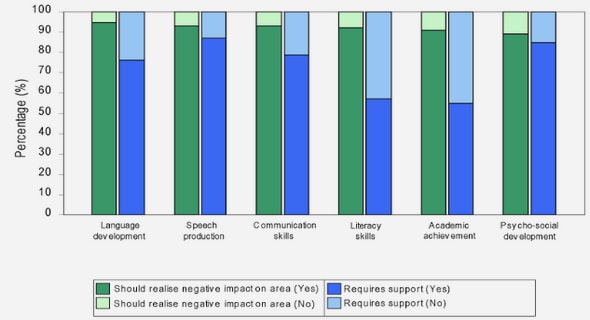(Downloads - 0)
For more info about our services contact : help@bestpfe.com
Table of contents
CHAPTER 1. INTRODUCTION
1.1. General context
1.2. Remote sensing data relevant to crop water budget monitoring
1.2.1. Visible – Near Infrared data
1.2.2. Thermal infrared data
1.2.3. Microwave data
1.3. Modelling the crop water budget components from remote sensing data
1.3.1. Evapotranspiration modelling
1.3.2. Root-Zone Soil Moisture modelling
1.3.3. Irrigation modelling
1.4. Objectives
CHAPTER 1. INTRODUCTION (FRANÇAIS)
1.1. Contexte général
1.2. Données de télédétection pertinentes pour le suivi du bilan hydrique des cultures
1.2.1. Données Visible – Proche infrarouge
1.2.2. Données thermiques infrarouges
1.2.3. Données micro-ondes
1.3. Modélisation des composantes du bilan hydrique des cultures à l’aide de la télédétection
1.3.1. Modélisation de l’évapotranspiration
1.3.2. Modélisation de l’humidité en zone racinaire
1.3.3. Modélisation de l’irrigation
1.4. Objectifs
CHAPTER 2. DATA
2.1. Introduction
2.2. Morocco: Haouz Plain
2.2.1. Meteorological data
2.2.2. Flux data (Eddy-covariance system)
2.2.3. Soil Moisture
2.2.4. Irrigation
2.2.5. Fractional green vegetation cover
2.2.6. Temperature data
2.3. Chile: Copiapó Valley
2.3.1. Meteorological data
2.3.2. Ground-based land surface temperature
2.4. Remote sensing data
2.4.1. Landsat data
2.4.2. ASTER Global Emissivity Datasets (ASTER GED)
2.4.3. MODIS data
2.5. Conclusion
CHAPTER 3. RETRIEVING IRRIGATION AND WATER BUDGET COMPONENTS: A FEASIBILITY STUDY
3.1. Introduction
3.2. FAO-56 dual crop coefficient method
3.2.1. Basal crop coefficient (Kcb)
3.2.2. Evaporation reduction coefficient (Ke)
3.2.3. Water stress coefficient (Ks)
3.3. Remote sensing data integrated into FAO-2Kc
3.4. Estimating water budget components from ground-based optical/thermal data
3.4.1. Implementation of a contextual method at in situ level
3.4.2. Root-zone and soil surface water status from optical/thermal data: Ks and Kr estimation
3.4.3. First-guess water budget components
3.4.4. Re-analysis of water budget components
3.5. Summary and conclusions
3.6. ARTICLE: Estimating the water budget components of irrigated crops: Combining the FAO-56 dual crop coefficient with surface temperature and vegetation index data
CHAPTER 4. REAL-LIFE APPLICATION OF THE IRRIGATION RETRIEVAL APPROAC 89
4.1. Introduction
4.2. Issues for implementing the crop water balance modelling over large areas 91
4.3. Contextual methods for detecting soil and crop water status
4.4. Landsat-derived estimates integrated into a crop water balance model for irrigation retrieval
4.5. From pixel-scale to field-scale irrigation
4.6. Crop coefficients Kcb and Ke derived from contextual methods
4.7. Main results of the spatial application to Haouz Plain
4.8. Summary and conclusions
4.9. ARTICLE: Irrigation retrieval from Landsat optical/thermal data integrated into a crop water balance model: A case study over winter wheat fields in a semi-arid region
CHAPTER 5. DISAGGREGATION OF THERMAL DATA FOR IMPROVING THE WATER BUDGET COMPONENTS ESTIMATION
5.1. Introduction
5.2. Disaggregation of LST data
5.2.1. Operational method for disaggregating LST data
5.3. Application in Copiapo River Basin – Chile: main results
5.3.1. Disaggregated LST product
5.3.2. Operational estimation of ET every 8 days
5.4. Application over a winter-wheat field (R3) in Haouz Plain – Morocco
5.4.1. Disaggregated LST
5.4.2. Irrigation retrieval by using disaggregated LST
5.4.3. Daily RZSM and ET
5.5. Summary and conclusions
5.6. ARTICLE: An operational method for the disaggregation of land surface temperature to estimate actual evapotranspiration in the arid region of Chile
CHAPTER 6. CONCLUSIONS AND PERSPECTIVES
6.1. Summary of results
6.2. Identifying the main limitations of the methods
6.2.1. Irrigation retrieval approach
6.2.2. LST disaggregation method
6.3. Perspectives
6.3.1. Towards the improvement in spatial and temporal resolution
6.3.2. Towards the use of radar data for a better representation of hydrological processes
6.3.3. Partitioning soil/vegetation components
CHAPTER 6. CONCLUSIONS ET PERSPECTIVES (FRANÇAIS)
6.1. Résumé des résultats
6.2. Principales limites des méthodes
6.2.1. Approche d’estimation d’irrigation
6.2.2. Méthode de désagrégation LST
6.3. Perspectives
6.3.1. Vers l’amélioration de la résolution spatiale et temporelle
6.3.2. Vers l’utilisation des données radar pour une meilleure représentation des processus hydrologiques
6.3.3. Partition entre les composants de sol et de végétation
BIBLIOGRAPHY
APPENDICES



